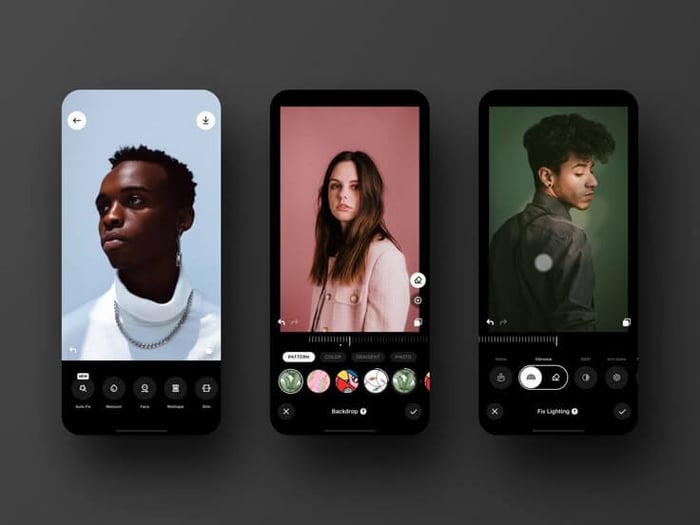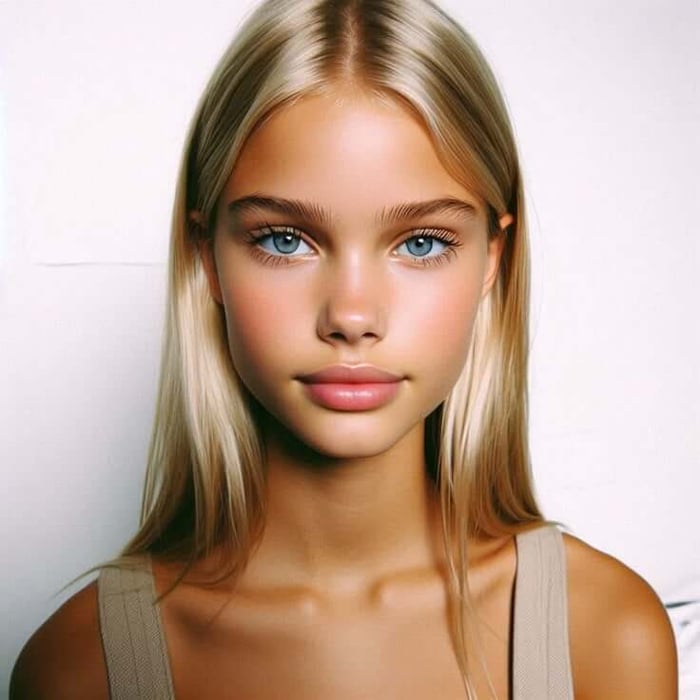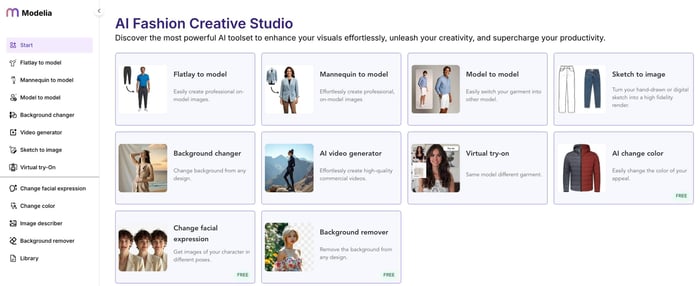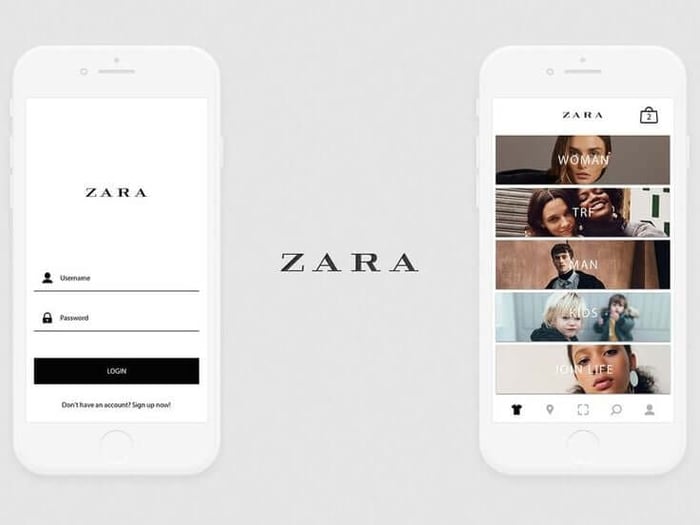Intelligent Image Resizing: How AI is Optimizing Image Quality for Any Screen Size
Table of Contents
- The Traditional Problem: Tradeoffs Between Quality and Flexibility
- How AI is Changing the Game
- AI Models Powering Smart Resizing
- Real Use Case: Modelia’s Integration of Intelligent-Image-Resizing
- Benefits That Go Beyond Aesthetics
- Real-World Example: Netflix’s Use of Intelligent Image Resizing
- Marketing Impact: Why Brands Are Investing in Smart Resizing
- Challenges Still to Solve
- The Future of Intelligent Image Resizing
- Closing Thoughts
Intelligent image resizing is redefining how digital visuals adapt to a world of screens from ultra-wide monitors to compact mobile devices. It’s not just about shrinking or stretching anymore. Today, AI is powering a new generation of content delivery, making images automatically responsive, high-quality, and smartly optimized for any context. As platforms compete for attention, intelligent image resizing ensures visual content stays sharp, balanced, and compelling, no matter where it’s seen.
The Traditional Problem: Tradeoffs Between Quality and Flexibility
Before intelligent image, teams relied on manual cropping, fixed aspect ratios, and static versions of every image. That often led to poor user experience: distorted banners, pixelated photos, or visuals that simply didn’t fit. In a mobile-first era, these compromises no longer cut it. The lack of responsiveness slowed sites, bloated content pipelines, and required more hands-on design work for every device format.

How AI is Changing the Game
AI brings real intelligence to resizing. Instead of treating all pixels equally, intelligent image resizing algorithms analyze visual content for meaning. They detect key elements like faces, logos, or objects and resize based on context, not just dimension. This makes it possible to crop with intent, enhance resolution only where needed, and serve tailored images in real time.
With AI image, content creators don’t need to guess how an image will look on a tablet versus a phone. The system does the work, preserving quality and relevance.
AI Models Powering Smart Resizing
A few technical approaches drive this revolution:
Convolutional Neural Networks (CNNs) help detect key areas for retention during resizing.
GAN-based super-resolution boosts image quality when resolution is limited.
Saliency mapping helps determine what areas users are most likely to notice.
Diffusion models enable intelligent inpainting for seamless resizing across irregular dimensions.
By combining these tools, intelligent-image becomes not just a one-time adjustment, but a dynamic visual strategy.

Real Use Case: Modelia’s Integration of Intelligent-Image-Resizing
At Modelia, we've implemented advanced visual automation techniques, into solutions for clients with high visual demands. In a fashion-tech project, our team helped a client move away from static image libraries toward AI-optimized delivery.
We used real-time saliency detection to focus on garments and faces, then applied super-resolution to reduce bandwidth without quality loss. The result? Better visual fidelity on mobile, faster load times, and a 30% drop in asset maintenance overhead.
What set this apart was our feedback integration. Over time, the resizing models adjusted based on real user behavior, improving which part of the image to emphasize per device and demographic. That’s the difference between static cropping and intelligent image.

Benefits That Go Beyond Aesthetics
The impact of intelligent image resizing extends beyond appearance. It improves:
Page speed: Optimized images mean faster loading and better SEO.
User experience: Users see clean, uncluttered visuals across devices.
Workflow efficiency: Design teams save time without sacrificing quality.
Personalization: Image delivery adapts based on context, not just device.
Accessibility: Important visual cues aren’t lost on smaller screens.
In sectors like e-commerce, media, and education, these are not just perks, they’re necessities.
Real-World Example: Netflix’s Use of Intelligent Image Resizing
A major adopter of intelligent image resizing at scale is Netflix. With a global user base accessing content across TVs, laptops, smartphones, and tablets, they’ve heavily invested in AI driven content adaptation. Netflix uses intelligent image resizing not only to adjust artwork and thumbnails based on screen size but also based on user behavior and preferences.
For instance, a movie poster may highlight different characters depending on viewing history. If a user tends to watch romantic films, the system may feature the romantic subplot more prominently in the preview image. That level of personalization is made possible through AI-driven image adaptation, going well beyond one size fits all visuals.
This approach improves engagement metrics like click-through rate (CTR) and user retention, showing how it can be a performance lever as much as a design tool.

Marketing Impact: Why Brands Are Investing in Smart Resizing
Modern marketing teams now see intelligent image resizing as essential for brand consistency. Visual identity needs to hold up across Instagram Stories, landing pages, and 4K TVs, without creating a different file for each.
Retailers like Zara and Nike have adopted intelligent image resizing to ensure their product photos adapt to different digital storefronts. They use AI to crop without losing context, even when showcasing shoes or accessories in lifestyle settings.
For marketing campaigns that span email, web, and mobile ads, this automation saves time and maintains brand cohesion. It's not just resizing it's visual storytelling at scale.

Challenges Still to Solve
Despite its strengths AI images still faces challenges:
Cultural bias in saliency: What seems important in one context may not translate elsewhere.
Overprocessing risks: Too much enhancement can create an uncanny or artificial effect.
User control: Users may want the option to override AI-driven crops.
These issues are being addressed through model refinement, human feedback loops, and design transparency.
The Future of Intelligent Image Resizing
Looking ahead, intelligent image resizing will become standard not optional. We’re already seeing platforms integrate this tech from the start, using it not just to display content but to generate it.
Imagine a CMS that adapts your blog header image depending on where and how it's shared. Or an e-commerce platform where product thumbnails shift based on screen, buyer history, or even time of day. This is no longer hypothetical, it's being built.
Modelia is exploring how intelligent image resizing can live deeper in media pipelines, from camera capture to final render, eliminating handoffs and improving scalability.

Closing Thoughts
In a world flooded with visuals, making every image count is a competitive advantage. How this technology transforms how content performs, not just how it looks. It makes media faster, smarter, and better suited to the way people engage today. And it doesn’t stop at one screen, it scales across all of them.
Beyond efficiency, this technology empowers creativity. Designers and developers gain more freedom to focus on storytelling, knowing that the system will preserve their intent across formats. As the visual web continues to grow, scalable image adaptation isn’t a luxury, it’s foundational.
Whether you're a product designer, developer, or content strategist, this is one AI tool that earns its place in the workflow.
Ready to elevate your visual content with AI? Explore our tools and solutions
How would you rate this article:
Related Articles
- AI Recolor Image Tools to Instantly Change Photo Colors
- AI Moodboard Generator: Design Inspiration Made Easy
- The Best AI Fashion Design Software to Innovate Your Brand
- Expert Mannequin Modeling Techniques for Perfect Shots
- How to Flip an Image in Seconds
- Branding for Ecommerce: Strategies for Creating an Impactful Online Presence
- Modelia vs Fashn.ai
- Digital Fashion in the Metaverse: How Virtual Clothing is Shaping the Future of Online Style
- 7 Best fashion AI tools for designers
- How Virtual Fitting Room Technology Is Changing Shopping
